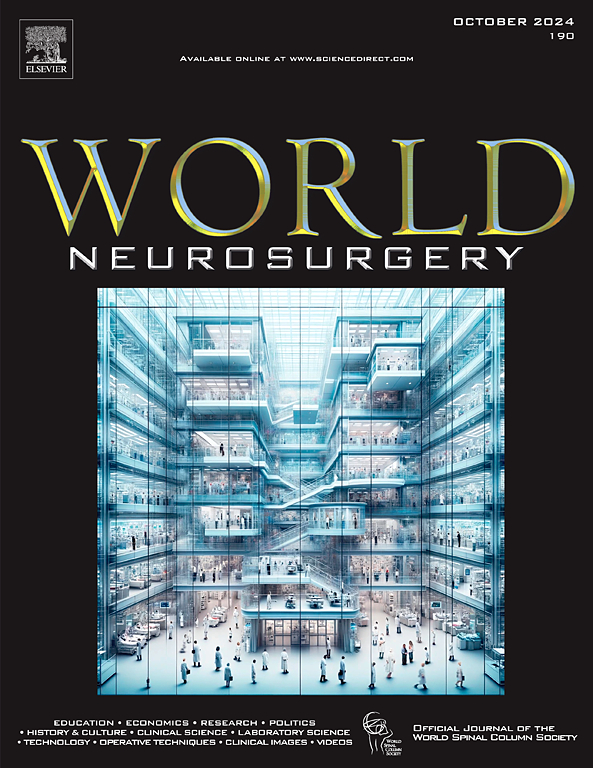Causal Relationship Between Mitochondrial DNA Copy Number and Intervertebral Disc Degeneration: A Bidirectional 2-Sample Mendelian Randomization Study
IF 1.9
4区 医学
Q3 CLINICAL NEUROLOGY
引用次数: 0
Abstract
Objective
The causal relationship between mitochondrial DNA copy number (mtDNA-CN) and intervertebral disc degeneration (IVDD) remains unclear. The study aimed to investigate the causal relationship between mtDNA-CN and IVDD using Mendelian randomization (MR) analyses.
Methods
The causal relationship between mtDNA-CN and IVDD was estimated using a bidirectional 2-sample MR method. The inverse-variance weighted method was employed as the main MR method. Sensitivity analyses were conducted to validate the robustness and reliability of the MR results.
Results
The MR results by inverse-variance weighted revealed that genetically predicted mtDNA-CN was not associated with IVDD (odds ratio = 0.91; 95% confidence interval = 0.79–1.04; P = 0.1731). Similar results were observed in other 4 MR methods (P > 0.05). Heterogeneity was found in the analysis of IVDD on mtDNA-CN (P < 0.05), while no horizontal pleiotropy was observed (P > 0.05). Furthermore, the leave-one-out analysis indicated the robustness of MR results not biased by a single nucleotide polymorphism. Moreover, the reverse MR analysis did not reveal any significant causal association of IVDD on mtDNA-CN.
Conclusions
The study revealed that there is no causal relationship of mtDNA-CN on the risk of IVDD, nor does IVDD have a significant causal effect on mtDNA-CN. Although the study did not find a significant causal relationship, it provides valuable insights into the complex interplay between genetic factors and IVDD. Further research is needed to explore to better understand the underlying mechanisms of this condition.
求助全文
约1分钟内获得全文
求助全文
来源期刊

World neurosurgery
CLINICAL NEUROLOGY-SURGERY
CiteScore
3.90
自引率
15.00%
发文量
1765
审稿时长
47 days
期刊介绍:
World Neurosurgery has an open access mirror journal World Neurosurgery: X, sharing the same aims and scope, editorial team, submission system and rigorous peer review.
The journal''s mission is to:
-To provide a first-class international forum and a 2-way conduit for dialogue that is relevant to neurosurgeons and providers who care for neurosurgery patients. The categories of the exchanged information include clinical and basic science, as well as global information that provide social, political, educational, economic, cultural or societal insights and knowledge that are of significance and relevance to worldwide neurosurgery patient care.
-To act as a primary intellectual catalyst for the stimulation of creativity, the creation of new knowledge, and the enhancement of quality neurosurgical care worldwide.
-To provide a forum for communication that enriches the lives of all neurosurgeons and their colleagues; and, in so doing, enriches the lives of their patients.
Topics to be addressed in World Neurosurgery include: EDUCATION, ECONOMICS, RESEARCH, POLITICS, HISTORY, CULTURE, CLINICAL SCIENCE, LABORATORY SCIENCE, TECHNOLOGY, OPERATIVE TECHNIQUES, CLINICAL IMAGES, VIDEOS
 求助内容:
求助内容: 应助结果提醒方式:
应助结果提醒方式:


